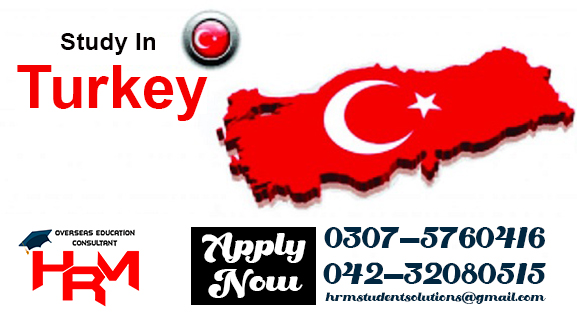Guide to Write a Scientific Journal you are going to learn about writing tips for a scientific journal. The tips are crucial because you don’t need to pay anyone. You can follow the guidelines and do the trick. After we get some data and information that can support the hypothesis, the next step is to document the data. This is done with three objectives.
Guide to Write a Scientific Journal
- First, to avoid information overlapping or data that is forgotten or missed.
- Secondly, with good and correct documentation can also facilitate us in “trace back” information or find back certain information when needed in the process of preparing scientific journal manuscripts.
- Third, to facilitate the process of compiling the bibliography at the end of the writing of the paper. The following are the things that need to be considered in the process of documenting data and information.
What data is needed to be recorded?
What data do we need to record? When we have found a source of information that is relevant and can support a hypothesis, then we should note the “identity” of that information source. What is meant by the “identity” of the source of information in the form of:
- Name of author / writer name
- The title and chapter of information sources
- pages containing the relevant information
- important keywords and short summaries of information sources
- the name of the publisher
- cities or place of publisher
- year of publication / edition of the publication
For information sources originating from the internet, the “identity” that needs to be recorded is as follows
- Heading of Article / journal title
- Author / editor’s name
- Date of publication / last date the information was revised
- Exact Date of access to information
- Address of publication site
- Website or URL address
- Online publishers (for sources from online scientific journals)
Have you prepared copy of source?
We need to keep some kind of backup. Information sources originating from books or other sources of hard copies should be photocopied as personal records. Thus, we can at any time review the information needed in writing scientific papers without having to go back to find the original source.
Do we need to copy entire content?
There is no need to copy the entire contents of the source, just pages or chapters containing statements that are related or reinforce the hypothesis. While the source of information from the internet, it should be printed in order to facilitate us in extracting the necessary pieces of information without the need to go back and forth to visit the relevant site. After having a copy from each source, don’t forget to highlight important pieces of information / supporting statements.
How to group information sources?
The next step will be to arrange the sources into groups. Furthermore, after the information is collected, then we can group it according to the type of information. For example, according to the topic we chose, “The Effect of Online Games Violence Against Psychological Conditions of Children”, then we can broadly group these sources of information based on the contents of supporting statements into several categories.
Classification of categories:
For example, information sources that contain violence in online games can be classified into one category, while information sources that support evidence that a child’s psychology is disrupted by the game can be made into separate categories again. This type of information can be further grouped into several categories according to need.
Giving code or numbers to sources:
It’s also good to give a code / number to the information sources that have been grouped. This aims to facilitate the documentation process itself. For example, information about evidence of psychological disorders in children is categorized as category A.
Furthermore, each piece of information about it can be numbered. Thus, we will not be confused and know exactly what sources contain any information. This is very effective, especially if we have many sources of reference. With this numbering system it can also reduce the risk of negligence if there is a copy of information lost because it will be easily identified and can be immediately anticipated by re-copying the source of the lost information.
Media documentation process
The data that has been collected must be well documented. One method that can be used is to summarize it with a word processor program on a computer. Each detail of data is entered into a worksheet that we can edit at any time and stored on flash disks. Another alternative, using Cloud Computing, for example, stores data details in Google Docs.
Manual documentation
By using technology or internet access, we can easily search, find and review information obtained. But do not rule out the possibility if you want to continue using the manual method, namely by documenting the data in a book / notepad. The important thing is that we document each source of information neatly so that we can work efficiently and save time.
Then the next step is to look for data that supports the statement.
3 vital steps for a scientific journal
The following are things that need to be considered in conducting research to write a scientific journal.
- 1. Campus library for information search
Where can we find evidence that supports the choice topics of our scientific journals? One of the best places to start research is the campus library. Yes, no mistake. The campus library is a good starting point for starting research. Libraries have very varied sources of information and are very potential in helping us formulate our scientific journal writing.
Start by using the library catalog to look for books / periodic journals / papers that are relevant to the topic of our writing. Not only is the source written version of hard-copies, libraries usually also have electronic collections (soft-copies) that can be downloaded and stored at flash disks.
You can easily access this Data if you save that in USB. One can read it any time even without internet.
Another source that can be a place to search for information is the internet media. Sophisticated information technology can greatly assist the process of finding and collecting information effectively. For starters, we can use search engines like Google, Yahoo or others.
- Learn 5W + 1 H
How do you examine and choose information that is appropriate and relevant to the topic of our writing? The simplest way to start a search for information is to make a list of 5W +1 H questions (What, When, Where, Who, Why and How). Then ask questions with these 6 keywords to dig deeper into the core of the topic. For a predetermined topic, the list of questions can be arranged as follows.
From here we can continue to develop a list of questions that we will explore the answers based on information from available sources. These questions will guide us in preparing our scientific journal outline later. From here we can sort and choose which information is important, less important and not important.
- Using the right keywords for your paper
After compiling a series of questions above, then we can start searching (research). To start an effective research, we need to use keywords (keywords) that proper to seek references in the library or reference from the internet. Why is that?
The right keywords will guide us to find the information we need by narrowing the search area. So that our information search is not ‘hanging around’ without being clearly focused. For example, for the topic of choice above, we can use keywords such as: children, addicted to online games, violence, and psychological effects something like that.
We need to be more specific if we want to show out capacity and class to the editors. We don’t need general terms to relate the points in our journal. So, cover your scientific journal with most relevant points and it will give you success.




